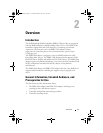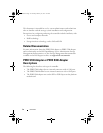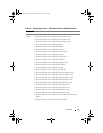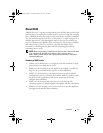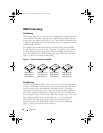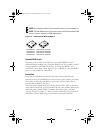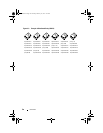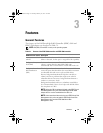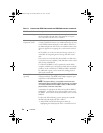
Overview
19
NOTE:
Mirrored physical disks improve read performance by read load balancing.
NOTE:
The PERC S300 controller only supports physical disks (SAS and SATA). SSD
devices cannot be migrated to a PERC S300 controller.
Figure 2-2. Example of Disk Mirroring (RAID 1)
Spanned RAID Levels
Spanning is a term used to describe the way in which RAID level 10 is
constructed from multiple sets of simpler RAID levels. For example, a RAID
10 has multiple sets of RAID 1 disk arrays in which each RAID 1 set is
considered a span. Data is then striped (as it is in RAID 0) across the RAID 1
spans to create a RAID 10 virtual disk.
Parity Data
Parity data is redundant data that has been generated to provide fault
tolerance within certain RAID levels. In the event of a drive failure, the parity
data can be used by the controller to regenerate user data. Parity data is
present only for RAID 5 disk arrays.
The parity data is distributed across all the physical disks in the system. If a
single physical disk fails, it can be rebuilt from the parity and the data on the
remaining physical disks. RAID 5 combines distributed parity with disk
striping, as shown in Figure 2-3. Parity provides redundancy for one physical
disk failure without duplicating the contents of entire physical disks.
Stripe element 1
Stripe element 2
Stripe element 3
Stripe element 1 Duplicated
Stripe element 2 Duplicated
Stripe element 3 Duplicated
Stripe element 4 Stripe element 4 Duplicated
A5_bk0.book Page 19 Thursday, February 10, 2011 8:34 PM



